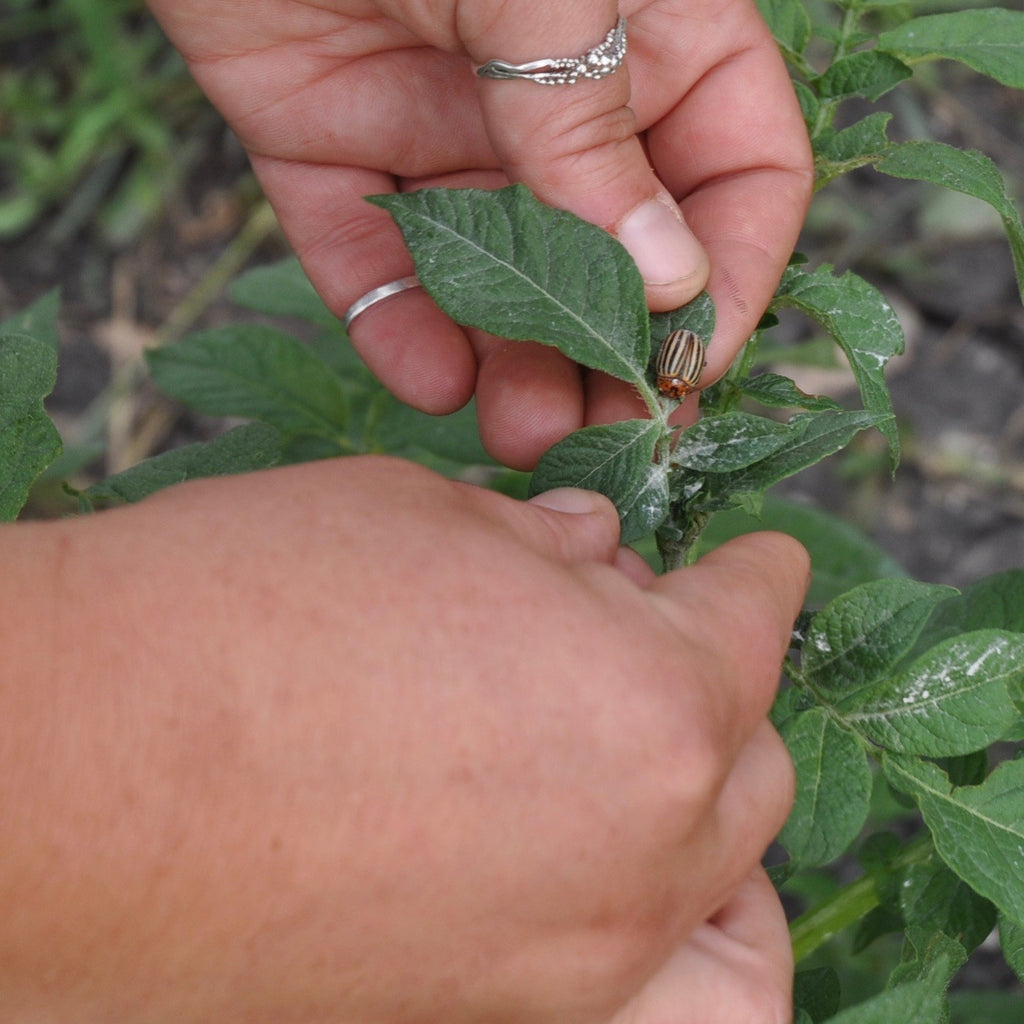DEALING WITH POTATO BEETLES
Even as many crops are turning out well this growing season, there has definitely been a theme of increased pests on many types of plants. Aphids came early and have been wide-spread, lily beetles are persistent, tent caterpillars were at peak numbers, and now potato beetles are seeming to be in a population boom.

Colorado Potato Beetle
While some pests come and go, leaving plants in relatively good shape, potato beetles are more than a nuisance, as they cause real damage to the crop. Furthermore, potato beetles can have multiple generations on the plants at one time, so once they are comfortably established they are not likely to simply disappear after a week or two.
So what to do? Here are several strategies to cope with this common pest:
- Pick adults off. The beetles are easy to spot and do not move quickly... making them easy to remove and squish. Same goes for the larvae.
- Treat plants with Diatomaceous Earth (DE). This is an insecticidal powder made from fossilized diatoms that lived 70 million years ago. The crushed diatom fossils are completely non-toxic, but when beetles crawl through the powder they get scuffs in their joints, which causes them to die. DE must be applied in such a way that beetles crawl through it to be effective, and must be reapplied after heavy rain.
Potatoes with Diatomaceous Earth applied to the foliage
- Treat the larvae with more Earth-friendly insecticides such as Safer's End-All. During the soft-bodied stage in the pests life, it is sensitive to the pyrethrum in End-All, and will be effectively controlled. End-All is a good option for many grub or larval stage pests. The spray does have to be applied regularly, as it is a contact insecticide. End-All is generally safe, but should not be sprayed around ponds with fish, nor where direct contact with birds or cats can occur (at least while product is wet).

Potato beetle larvae
- Grow potatoes in raised beds or large pots. Potato beetles are much less of a problem in this type of situation, as they have a harder time getting up to to the plants, initially, and there is less chance of over-wintered beetles being present.

Clean potatoes growing in Geoplanter raised beds.
- Look out for the eggs. Potato beetles lay clusters of bright orange eggs on the undersides of leaves. If you spot these, remove and dispose of the leaves.
- Practice crop rotation. Potato beetles over winter in the soil, so beyond rotating crops it is good practice to do a thorough job cleaning up the potato patch at year end.
- Keep an eye out for potato beetles on several secondary targeted crops such as eggplants and ground cherries, which they will turn to if potato plants are unavailable.







